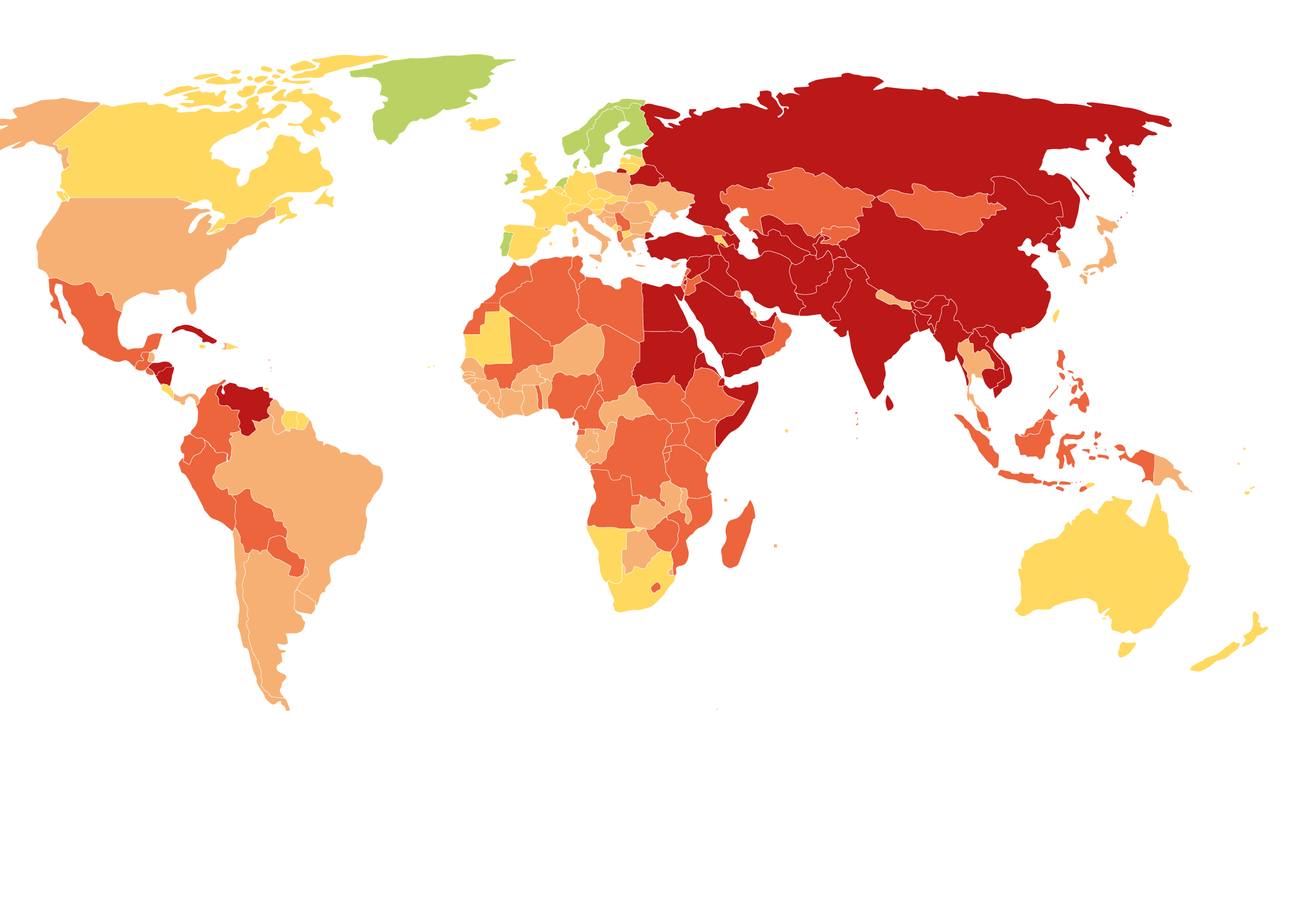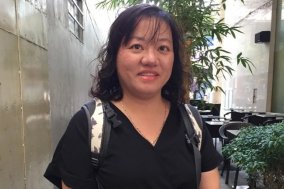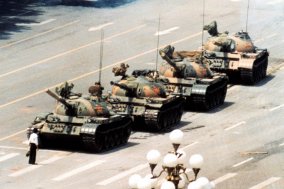- Asia - Pacific
- Countries
- Press releases
- Take action
The press freedom situation has worsened in the Asia-Pacific region, where 26 of the 32 countries and territories have seen their scores fall in the 2024 World Press Freedom Index. The region’s dictatorial governments have been tightening their hold over news and information with increasing vigour.
With three journalists killed and at least 25 cases of journalists detained, Afghanistan (178th) dropped 26 places. North Korea (177th) and China (172nd), with their all-out persecution of the media, have stagnated in the depths of the Index. Vietnam (174th) and Myanmar (171st) have pursued a policy of mass imprisonment of media personnel. They are the world’s fourth and second biggest jailers of journalists, respectively. An increase in government reprisals against journalists has added Cambodia (151st) to the countries coloured dark red on the press freedom map because their situation is classified as “very serious.” In 2023, two journalists were murdered in the Philippines (134th), which continues to be one of the region’s most dangerous countries for media professionals.
Pre-election violence
Against an election backdrop, violence against journalists increased in several of the region’s countries with an almost total impunity. Three journalists were murdered in Bangladesh (165th). The number of arbitrary detentions and enforced disappearances of journalists increased in Pakistan (152nd), while journalists were subjected to physical and online attacks in Indonesia (111th).
Legislation hostile to press freedom
Some countries’ rises in the Index are misleading inasmuch as their scores fell and the Index rises were the result of falls by countries previously above them. This is the case with India (159th), which was pushed up two places despite recently adopting more draconian laws. Its new position is still unworthy of a democracy. Similarly, Hong Kong (135th) rose five places despite a fall in its score due to an increase in the persecution of journalists under the national security law imposed by Beijing in 2020.
Press freedom under attack in democracies
Censorship returned in several countries that had seen improvements in recent years. In South Korea (62nd), several media outlets were threatened with prosecution by the government for supposed defamation. The threat of defamation proceedings keeps journalists on a short leash in Mongolia (109th), while news sites critical of the government are often blocked in Malaysia (107th).
Regional press freedom models
No country in the Asia-Pacific region is among the Index’s top 15 this year. This is chiefly due to a six-place fall by New Zealand (19th), which nonetheless retains its position as the region’s leader. Although experiencing challenges to the right to information, other regional democracies such as Timor-Leste (20th), Samoa (22nd) and Taiwan (27th) have also retained their roles as press freedom models.
The countries
| Name | Index | Global score | Diff. score 2023 | Diff. position 2023 |
|---|---|---|---|---|
Afghanistan
|
178
|
19.09
|
-20
|
26
|
Australia
|
39
|
73.42
|
-5
|
12
|
Bangladesh
|
165
|
27.64
|
-8
|
2
|
Bhutan
|
147
|
37.29
|
-22
|
57
|
Myanmar
|
171
|
24.41
|
-4
|
-2
|
Brunei
|
117
|
50.09
|
6
|
-25
|
Cambodia
|
151
|
34.28
|
-8
|
4
|
China
|
172
|
23.36
|
1
|
-7
|
North Korea
|
177
|
20.66
|
-1
|
-3
|
South Korea
|
62
|
64.87
|
-6
|
15
|
Hong Kong
|
135
|
43.06
|
-1
|
-5
|
Fiji
|
44
|
71.23
|
12
|
-45
|
India
|
159
|
31.28
|
-5
|
-2
|
Indonesia
|
111
|
51.15
|
-3
|
3
|
Japan
|
70
|
62.12
|
-1
|
2
|
Laos
|
153
|
33.76
|
-3
|
-7
|
Malaysia
|
107
|
52.07
|
-10
|
34
|
Maldives
|
106
|
52.36
|
-4
|
6
|
Mongolia
|
109
|
51.34
|
-8
|
21
|
Nepal
|
74
|
60.52
|
3
|
-21
|
New Zealand
|
19
|
79.72
|
-5
|
6
|
Pakistan
|
152
|
33.9
|
-6
|
2
|
Papua New Guinea
|
91
|
56.02
|
-11
|
32
|
Philippines
|
134
|
43.36
|
-3
|
2
|
Samoa
|
22
|
78.41
|
-4
|
3
|
Singapore
|
126
|
47.19
|
0
|
-3
|
Sri Lanka
|
150
|
35.21
|
-10
|
15
|
Taiwan
|
27
|
76.13
|
1
|
-8
|
Thailand
|
87
|
58.12
|
3
|
-19
|
Timor-Leste
|
20
|
78.92
|
-6
|
10
|
Tonga
|
45
|
70.11
|
-1
|
1
|
Vietnam
|
174
|
22.31
|
-2
|
-4
|






